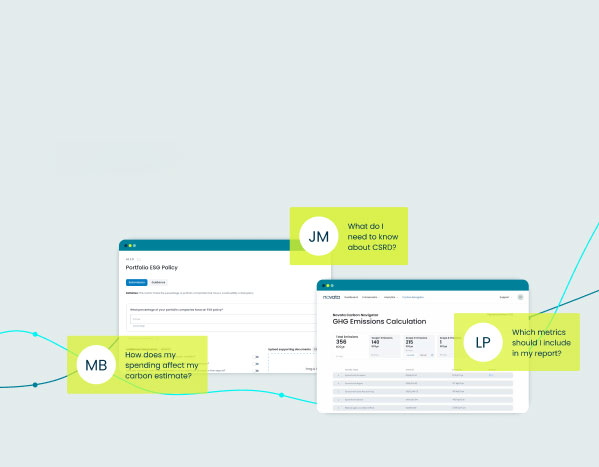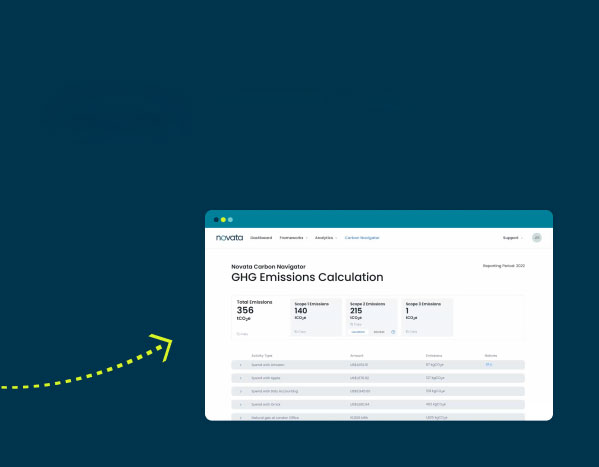Double materiality is the process of determining the significant impacts a company has on people, society, and the planet as well as the cash flow and value creation associated with them. In ESG parlance, separately, these lenses are called impact materiality and financial materiality, and when conducted together, they are called double materiality. The concept of financial materiality is well-established, whereas combining the financial assessment with a study of the company’s impact on core stakeholders is more recent, especially as a regulatory requirement.
The European Union’s Corporate Sustainability Reporting Directive (CSRD) puts double materiality at the core of its sustainability requirements for large companies operating in the European Union (EU). More specifically, the CSRD requires companies to conduct a double materiality assessment to narrow down which sustainability topics are pertinent to the business and report on them annually.
Conducting a double-materiality assessment is quite an undertaking, and the process will vary for each company. The company size, industry, stakeholders, locations, and internal processes will inform the process. The CSRD does not prescribe a detailed process, and it is clear that there is no one-size-fits-all approach. However, to help guide companies, the CSRD identifies four steps companies should follow:
- Understand the business context
- Identify possible impacts, risks and opportunities
- Determine which impacts, risks, and opportunities are material
- Identify information to be reported and report on the process and outcome
Below, we dive into each of these steps to break down what companies need to do to successfully conduct a double materiality assessment in line with CSRD requirements.
Steps to Conduct a Double Materiality Assessment
Step 1: Understand the business context
The objective in this initial stage of the double materiality assessment is to understand the company’s business model, map out its value chain and business relationships, and identify affected stakeholders. Three common resources are instrumental to understanding the company’s activities and business relationships: the company’s strategy and financial statements, its products and services, and a mapping of the company’s business relationships across the upstream and downstream value chain.
Other contextual information can help identify potential impacts, risks, and opportunities, such as the relevant legal and regulatory landscape, published documentation on sector-specific benchmarks, trends, and scientific literature. The last piece necessary to understand the business context is identifying affected stakeholders, i.e., the stakeholders impacted by the company’s operations, its upstream and downstream value chain, and its business relationships. There are two main groups of stakeholders: users of sustainability statements for financial or societal reasons, such as investors or civil society actors, and affected stakeholders, such as local communities or, more abstractly, the environment.
Step 2: Identify possible impacts, risks, and opportunities
The second stage of the process is geared toward compiling a list of all possible impacts, risks, and opportunities that will later be evaluated for their materiality.
The European Financial Reporting Advisory Group (EFRAG), which is in charge of proposing practical guidance on implementing CSRD, has identified a series of best practices for companies to complete this step.. It recommends companies rely on ESG standards and frameworks to identify sector-specific impacts and points to the IFRS to identify industry-based financially material impacts and GRI Sector Standards to identify impacts on people, the planet, and society. Due diligence, stakeholder engagement, risk management, and grievance mechanisms can also inform the preliminary list. EFRAG cautions that this preliminary list can be long, especially if this is the company’s first materiality assessment.
There are certain requirements at this stage: companies must study the topical ESRS (listed in ESRS 1 – AR 16) to determine whether any of the impacts, risks, and opportunities listed are relevant to the company. Companies can also review the Draft list of ESRS Data points for more granular information. Companies must also identify impacts that are specific to the industry(ies) to which they belong as well as company-specific impacts. Furthermore, for each identified impact, risk, and opportunity, the company must disclose whether it relates to its own operations, upstream/downstream value chain, and relevant time horizon.
Step 3: Assess and Determine Material Impacts, Risks, and Opportunities
This is arguably the arduous stage of conducting a double materiality assessment.The objective here is to evaluate the preliminary list of possible impacts, risks, and opportunities, assessing impact materiality for the impacts and the financial materiality for risks and opportunities.
Impact Materiality
The goal of the impact materiality process is to assess what effects the company, its value chain, and business relationships have on the planet, people, and society. More concretely, the exercise consists of determining and applying quantitative and/or qualitative criteria to assess the severity and likelihood of current and potential impacts. Severity here encompasses the scale, scope, and irreversible character of the impact. Companies will have to set thresholds to determine the severity of each impact. Thresholds must be data-driven and well-documented and are determined by relying on objective, qualitative, and quantitative data, which can come from varied sources, including scientific or academic research, due diligence, and stakeholder engagements. In this step, companies must examine the materiality of the matters listed in ESRS 1 – AR 16, in other EU regulations listed in ESRS 2 Appendix B, and in the ESRS 2 Mandatory Reporting.
Financial Materiality
The financial materiality assessment aims to assess which sustainability matters generate risks and opportunities that could have financial effects over the short-, medium-, or long-term for the company. This information is material for those who use financial reports when making decisions regarding providing resources (e.g., loans) to the company. To put it plainly, the goal here is to identify which sustainability topics have a financial impact on the company’s bottom line that investors, creditors, or shareholders will find helpful when assessing the company’s finances.
The financial materiality assessment will require companies to determine the likelihood and potential magnitude of the identified risks and opportunities. The goal here is to determine what risks and opportunities have a financial effect on the company, in terms of performance, financial position, cash flows, access to, and cost of capital used. The time horizons can be broader than regular financial statements. The company’s dependencies should be considered a potential source of financial risk or opportunity.
The final list of material impacts, risks, and opportunities will be based on the consolidation of the impact and financial analyses.
Step 4: Report on the Double Materiality Assessment
The final step in the double materiality assessment process is to report and explain the rationale for determining the material impacts, risks, and opportunities. Where the previous steps help identify which topics are material, in this step, the company must determine what specific information needs to be reported on these topics. This will be determined in part by the significance of the information or its decision-usefulness for various users of the company’s sustainability data. These users include investors, creditors, shareholders, NGOs, and civil society. The company also has to report on the process it followed to conduct the assessment, as required under ESRS 2 IRO-1, ESRS 2 IRO-2, ESRS 2 SBM-3.
Conducting a Double Materiality Assessment with Novata
Novata is revolutionizing the way companies assess double materiality. Transform a labor-intensive, costly, and complex process into a digitized, transparent, and audit-ready solution, powered by ESG experts and cutting-edge technology. Find out more.






